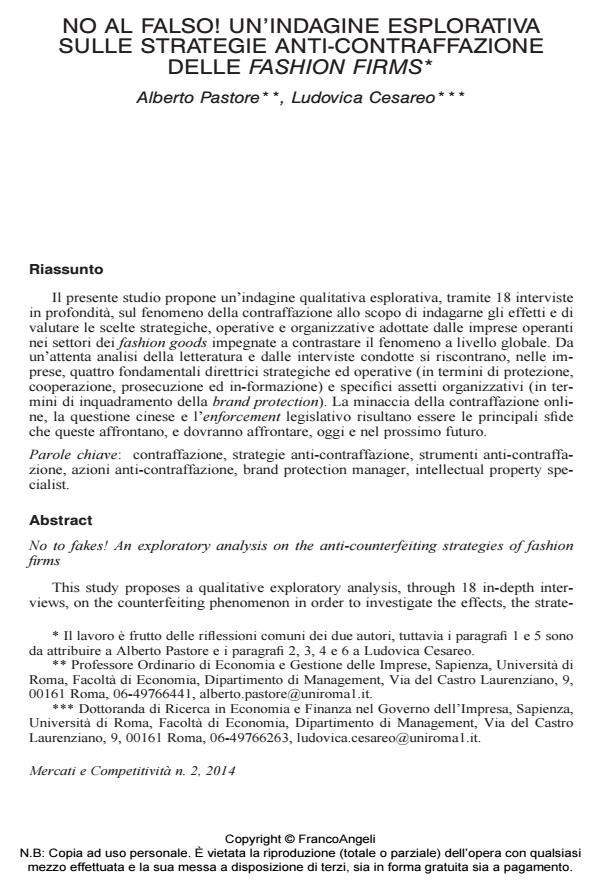No to fakes! An exploratory analysis on the anti-counterfeiting strategies of fashion firms
Journal title MERCATI E COMPETITIVITÀ
Author/s Alberto Pastore, Ludovica Cesareo
Publishing Year 2014 Issue 2014/2
Language Italian Pages 22 P. 81-102 File size 116 KB
DOI 10.3280/MC2014-002005
DOI is like a bar code for intellectual property: to have more infomation
click here
Below, you can see the article first page
If you want to buy this article in PDF format, you can do it, following the instructions to buy download credits

FrancoAngeli is member of Publishers International Linking Association, Inc (PILA), a not-for-profit association which run the CrossRef service enabling links to and from online scholarly content.
This study proposes a qualitative exploratory analysis, through 18 in-depth interviews, on the counterfeiting phenomenon in order to investigate the effects, the strategic, operational and organizational measures taken by companies operating in the fashion goods sectors committed to combating the phenomenon globally. From a careful analysis of the literature and from the conducted interviews, it becomes evident how companies adopt four fundamental strategic and operational decisions (in terms of protection, cooperation, prosecution and in-formation) and specific organizational structures (in terms of brand protection location within the firm). The threat of online counterfeiting, the so called "China trap" and the legislation enforcement emerge as the challenges that these companies are facing today and will have to face in the near future.
Keywords: Counterfeiting, Anti-Counterfeiting Strategies, Anti-Counterfeiting Instruments, Anti-Counterfeiting Actions, Brand Protection Manager, Intellectual Property Specialist.
- Counterfeiting and Piracy Ludovica Cesareo, pp.59 (ISBN:978-3-319-25356-5)
Alberto Pastore, Ludovica Cesareo, No al falso! Un’indagine esplorativa sulle strategie anti-contraffazione delle fashion firms in "MERCATI E COMPETITIVITÀ" 2/2014, pp 81-102, DOI: 10.3280/MC2014-002005